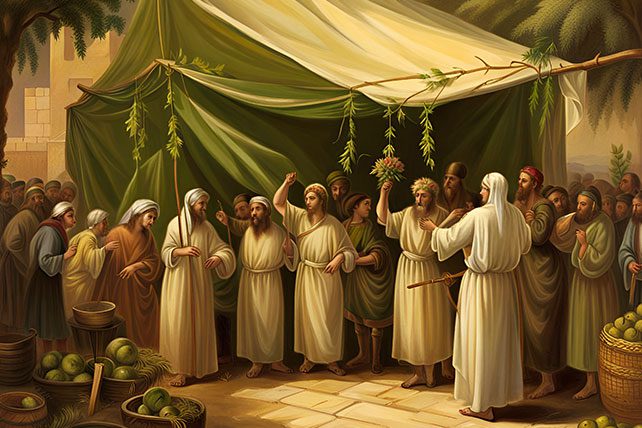The Feast of Tabernacles, also known as Sukkot in the Jewish tradition, is a festival rich in history, symbolism, and spiritual reflection. This seven-day celebration occurs in September or October, following the Jewish lunar calendar. It is a time of joy, renewal, and community, commemorating significant historical events and embodying profound theological themes that resonate across Jewish and Christian beliefs.
Sukkot: The Feast of Tabernacles
The Feast of Tabernacles holds a special place in Jewish history and religious practice. It commemorates the forty-year period during which the Israelites wandered in the wilderness, living in temporary shelters, or sukkahs, as they journeyed towards the Promised Land. This historical backdrop is foundational to understanding the festival’s themes of reliance on God, remembrance of past deliverance, and the transient nature of human life.
RELATED: Understanding the Feasts Leviticus 23
In Leviticus 23:34-43, the Bible outlines the instructions for observing the feast, emphasizing its significance as a time of gathering and thanksgiving. It coincides with the harvest season, making it a time to celebrate God’s provision and bounty.
Christian Interpretation and Symbolism of Sukkot
For Christians, the Feast of Tabernacles takes on additional layers of meaning. It symbolizes God’s dwelling among His people, reflecting the incarnation of Jesus Christ and His presence in the lives of believers. The temporary nature of the sukkah reminds Christians of the temporary nature of earthly life and the eternal home prepared for them in heaven.
Many see the festival as prophetic, foreshadowing a future time of restoration and peace when Jesus will reign on earth. This eschatological aspect turns the observance into a time of hopeful anticipation and prayer for the fulfillment of God’s promises.
Observances and Traditions
During Sukkot, it is customary to build a sukkah, a temporary shelter often constructed with wooden frames and covered with palm leaves or other natural materials. These structures serve as a vivid reminder of the Israelites’ wilderness dwellings and a symbol of God’s protective care.
Families and communities gather in these sukkahs to share meals, recite prayers, and welcome guests, embodying the values of hospitality and community. The practice of Ushpizin, inviting symbolic guests from the Bible into the sukkah, reinforces the festival’s themes of inclusion and remembrance.
The Four Species (Lulav, Etrog, Myrtle, and Willow) are another central Sukkot tradition, representing different types of individuals and teachings about unity and diversity within the community.
The Last Day of Sukkot: Shemini Atzeret and Simchat Torah
The celebration extends into an eighth day, known as Shemini Atzeret, and in many traditions, this day also marks Simchat Torah, a joyous time when the annual cycle of Torah reading is completed and restarted. This extension emphasizes the continuous cycle of learning, celebration, and renewal in the Jewish faith.

